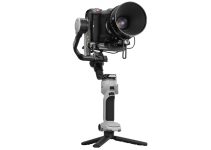Wireless monitors are a must-have accessory and an essential asset for every production. Unfortunately, even the entry-level systems available on the market these days tend to be quite expensive and way out of most independent filmmakers’ budgets. But even if you can’t afford such a device, you can still build one on your own. The DIY wireless monitor in the video below will set you back only a few hundreds of dollars depending on the accessories you are going to use.
As there are many varieties and possible configurations, you simply need to explore and find what suits your needs and personal preferences best. All in all, everything you are going to need to build your own wireless monitor can be found at your local hardware store or purchased online at a really affordable price.
The insightful video produced by Sam and Niko will walk you through the process showing you how to put together the bits and pieces in an easy to follow step-by-step guide. So, without further ado, let’s jump in.
Whether you tend to use your good old and well trusted Marshall monitor or you simply want to pick the brand new, yet more expensive Small HD 502, the choice is all yours. There are various options available out there, so I guess it won’t be an issue to pick the right one.
Furthermore, you are also going to need some type of monitor cage or handle system to accommodate your monitor along with a reliable transmitter/receiver and a proper battery solution on top that can power up the whole setup and keep it running for at least a couple of hours.
Here are the suggested items you will need to build this wireless monitor combo:
Amazon US Order Links
- Lilliput 7-inch LCD monitor with HDMI
- Wireless LCD Grip Gear
- Nyrius ARIES Prime Wireless HDMI Transmitter
- 12V Tenergy 2000mAh NiMH Battery Pack
- Jackery Bar External Battery Charger
I would also encourage you to consider some additional accessories such as a sun hood and an SDI to HDMI converter (in case your camera doesn’t provide the latter output option) along with a few extra batteries as you’ll never know what might happen when you are out in the field. Don’t forget to check all the connections and cables you are going to use for the set up in advance and make sure that they all match perfectly.
Obviously, building such a wireless setup is not rocket science, plus it won’t cost you an arm and a leg unlike most of the professional solution out there. So, spending some time and effort in building your own one seems to be a great alternative cost-effective option that will definitely pay off in the end.
[via: Premium Beat, source: SamandNiko]
Disclaimer: As an Amazon Associate partner and participant in B&H and Adorama Affiliate programmes, we earn a small comission from each purchase made through the affiliate links listed above at no additional cost to you.




